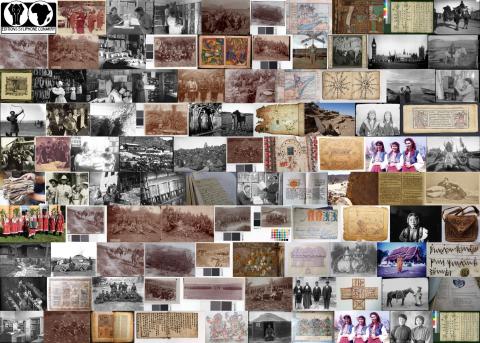
Aims and objectives
The main objective of this project will be to digitise and preserve approximately 1,450 ephemera from the period 1900-1960 and 215 manuscripts ranging from the early 19th to early 20th century.
The ephemera range from religious, social, cultural but are mostly political. They are mainly pamphlets and leaflets, with some posters and postcards.The ephemera from the period 1900-1951 represent the last 50 years of Rana Period and the titles from 1951-1960 when Nepal was opened to the outside world for the first time. It was also the period of Nepal's short stint with parliamentary democracy, until the first elected government was toppled by a coup from King Mahendra in December 1960, replacing the multiparty democracy with his own brand of 'partyless political system' named the 'Panchayat'.
The manuscripts date from 1808 and cover a wide range of subjects such as religion, culture, philosophy, law, medicine, hagiography, natural history, and literature. The majority of the manuscripts are written in Nepali, some in a mixture of Sanskrit and Nepali, some in Newari and a few in Hindi or a mix or Hindi and Nepali. Approximately 10 manuscripts are 'Thyasaphus' - folios of handmade paper, stitched or glued together along the edges. There are also rare manuscripts of literary works by major litterateurs of the country.
From invitations in 1918 to attend Nepali language adaptations of Shahespeare in the Rana palaces of Kathmandu, to anti-Rana leaflets strewn in the alleys; from a lore in a 200-year old manuscript recited by healers for treatment of sinusitis, to a rare collection of astrological charts of kings; these are all exciting avenues for researchers to explore.
The collections are currently housed within the old Madan Puraskar Pustakalaya building, which is in a dilapidated state. The materials have become highly brittle due to poor-quality paper and ink. Leakage during the monsoons results in damp and humid conditions which leads to fungi and insect attacks. Urgent preservation intervention is required before the collection deteriorates altogether, making them unsuitable for copying.
Outcomes
The project achieved its aim to preserve through digitisation around 1400 printed-ephemera and 215 manuscripts from MPP. The collections represent important events in the history of Nepal and are not available elsewhere. The ephemera collection includes religious, social, cultural, personal and political materials. The manuscript collection cover subjects such as religion, hagiography, literature, law, medicine, natural history, among others. The project also made these collections available online.
The endangered archival materials are now housed properly at Madan Puraskar Pustakalaya (MPP). A digital copy has been deposited with MPP and with the British Library.
The records copied by this project have been catalogued as:
- EAP272/1 Historic Ephemera and Manuscripts from Nepal [1700s-1960s]
Due to the cyber-attack on the British Library in October 2023, the archives and manuscripts database is currently inaccessible and we are unable to provide links to the catalogue records for this project.




